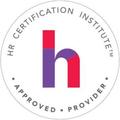Creating Journey Maps - Employee Experience Exchange

Everything an employee does, thinks, feels, and says at work is part of their journey, from the time they apply to the company to the moment they leave. The touchpoints are referred to as moments that matter. Like customer journey mapping, creating a visual representation of what an employee encounters can help create a framework that aligns employee experience efforts across the organization and assesses its ability to meet the employee value proposition.
4 Meeting Highlights
Journey maps are from the employee's perspective. They are not process maps, which are from a business perspective. A blueprint can document the employee experience and addresses how the organization supports that journey.
Prioritize key experiences. Evaluate what the business and HR strategy is and identify which key employee experiences could impact that strategy.
Collect data. Consider the relevant data sources such as engagement surveys, Glassdoor, focus groups, etc. Do not try to create a journey map with a set of assumptions. You need research first. While researching, don't be afraid to prove yourself wrong when learning about your employee's experiences.
Don't leave the DE&I perspective as an afterthought. Involve the team in prioritizing key experiences and collecting data. Come back to them to validate journey maps and co-create future state journey maps, too.
View T-Mobile's Presentation (7 minutes), and view Allstate's presentation (13 minutes).
Tips for Journey Mapping
- Map out the journey you want to create before choosing a technology.
- Continue to stay engaged and advocate for the employee's experience as solutions are implemented.
- It can help stakeholders to hear from employees directly. Invite them to participate in the research stage.
- Find an executive sponsor for human centered design and go where the energy is. Not everyone will want a human-centered design process and that's ok. Start where you can.
- If you prioritize which experience you want to map with a business objective, it's a lot easier to find executive sponsorship.
- Select fewer elements if creating journey maps feels too overwhelming. More detail can be built in later.
- Remember journey maps are dynamic, living artifacts and will change over time.
log in




